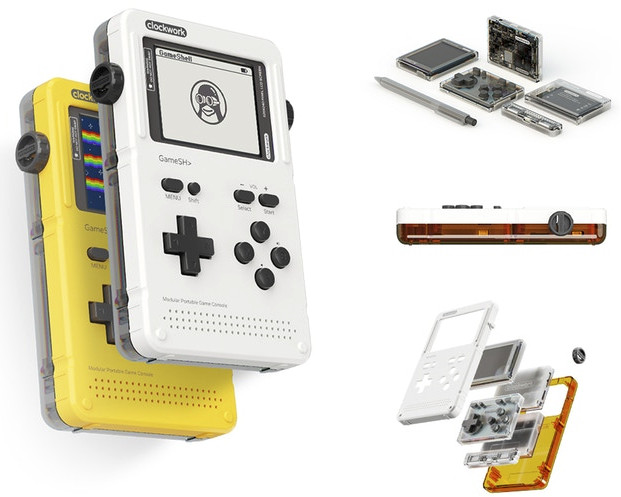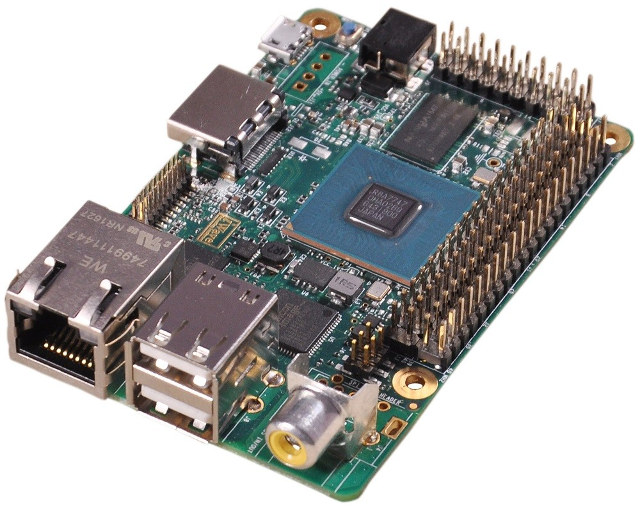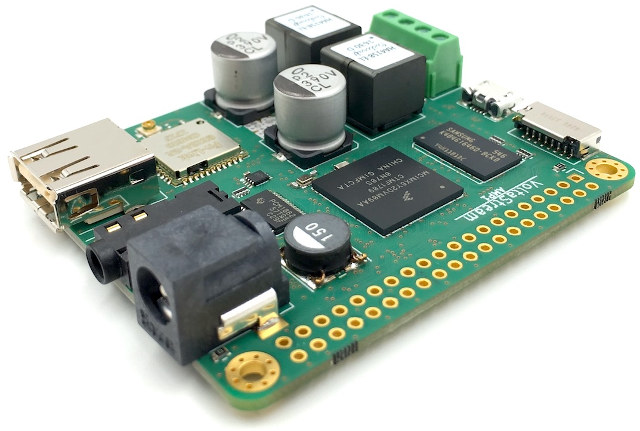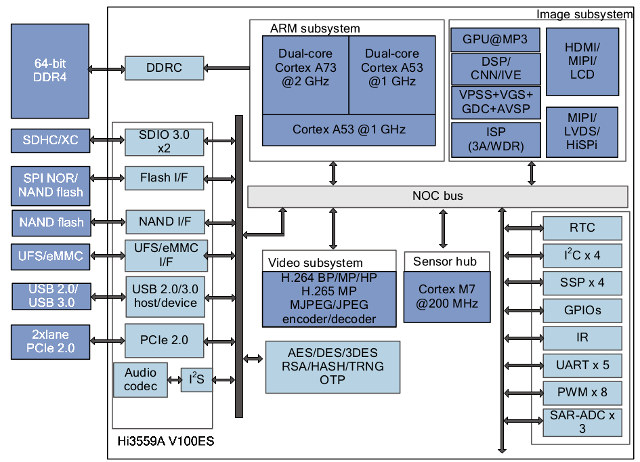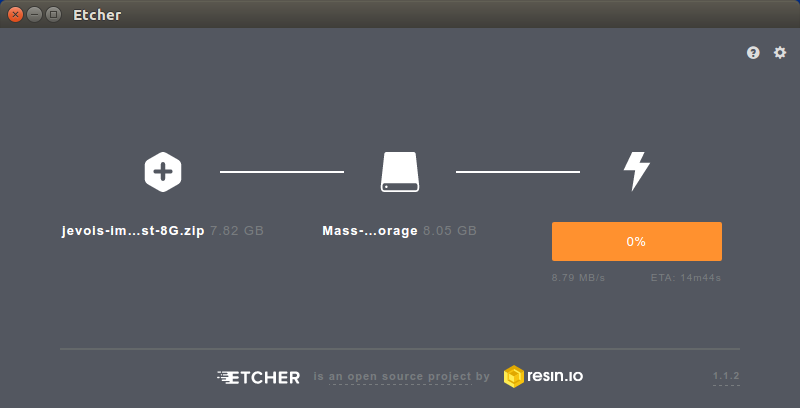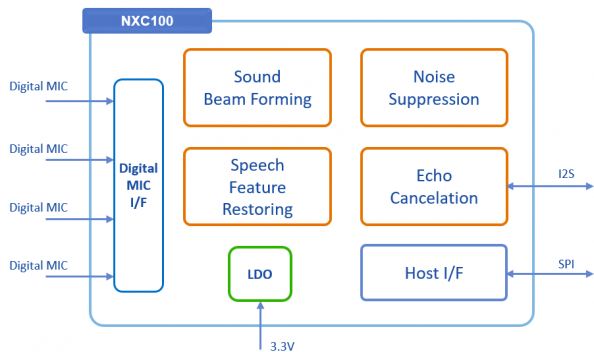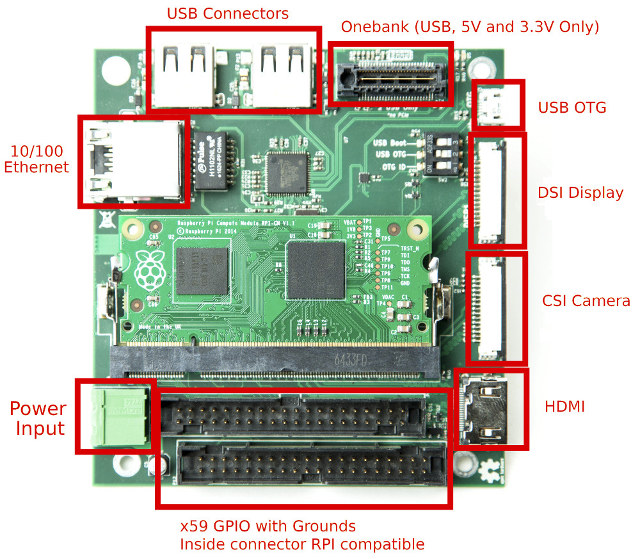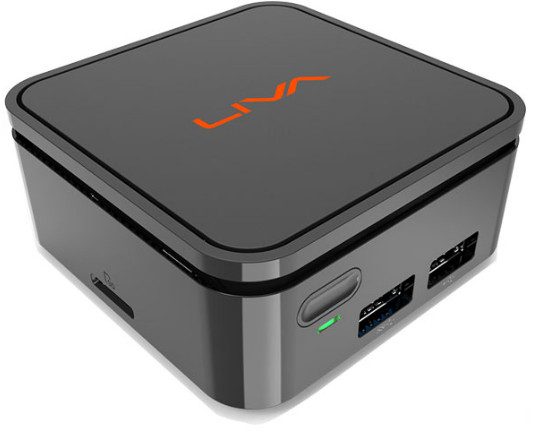Allwinner R16 with its lowly four Cortex A7 cores and Mali-400MP2 GPU would not normally come to mind when designing a gaming console. But Nintendo used the R16 processor twice in their retro gaming consoles: NES Classic and SNES Classic Edition. Clockwork, a startup based in Hangzhou, China, decided they could also do gaming console with the processor: Gameshell. But their product is quite different, as it’s both a portable console with 2.7″ display, and a development platform with the console based on Clockwork Pi development board, and an Atmel AVR (Arduino) based keypad board. Gameshell specifications: Clockwork Pi development board SoC – Alwinner R16-J quad core Cortex A7 processor @ 1.2 GHz with Mali-400MP2 GPU System Memory – 512MB or 1GB (in future revision of the board) Storage – 1x micro SDHC slot Video Output / Display I/F – 18-bit RGB display interface, micro HDMI (planned in revision of […]
Compact Renesas RZ/G1C based ARM Linux Single Board Computer Exposes 100 Expansion Pins
iWave Systems has released a new business card sized single board computer (SBC) with iW-RainboW-G23S, which looks somewhat similar to a Raspberry Pi 3 board, but is equipped with Renesas RZ/G1C single or dual core ARM Cortex A7 processor, up to 2GB RAM, Gigabit Ethernet, and provides plenty of I/Os through 3 headers for a total of 100 pins. Target applications include HMI & access control, industrial control, healthcare devices, point of sale, IoT, home & office automation, and white goods & appliances. iW-RainboW-G23S board specifications: SoC – Renesas RZ/G1C Dual/Solo ARM Cortex-A7 processor @ 1.0 GHz with PowerVR SGX531 3D GPU System Memory – 512 MB DDR3 (expandable up to 2GB) Storage – 2MB SPI Flash (expandable), 8GB eMMC Flash (expandable), and micro SD connector Video Output/Input – 1x HDMI output port, 1x CVBS input RCA jack, optional 1x CVBS output RCA jack/header Video – HD encode/decode Connectivity – 100/1000Mbps […]
VoltaStream AMP1 Linux Audio Board Includes a Stereo Audio Amplifier, Adds WiFi and Bluetooth
Last summer I wrote about VoltaStream ZERO an audio board powered by NXP i.MX6ULL processor, with up to 1GB RAM, a Texas Instruments DAC, and leveraging Raspberry Pi Zero form factor. The board runs a custom Linux distribution called PolyOS built with the Yocto Project, and including shairport-sync, librespot, SqueezeLite, a DLNA renderer, and more. Polyvection, the company behind the project is now back with VoltaStream AMP1 audio development board, with half the board very similar to VoltStream ZERO, and the other half featuring an audio amplifier, and a wireless module for WiFi and Bluetooth. VoltaStream AMP1 board specifications: SoC – NXP i.MX6ULL ARM Cortex-A7 processor @ 996 MHz System Memory – 512 MB DDR3 Storage – micro SD card slot Audio 1x I2S for integrated DAC and AMP, 1x I2S for GPIO access, 1x TOSLINK-IN jack Analog DAC – Texas Instruments PCM1862 (SNR 103 dB) Amplifier – ISSI IS31AP2121 […]
Hisilicon Hi3559A V100ES is an 8K Camera SoC with a Neural Network Accelerator
Earlier today, I published a review of JeVois-A33 machine vision camera, noting that processing is handled by the four Cortex A7 cores of Allwinner A33 processor, but in the future we can expect such type of camera to support acceleration with OpenCL/Vulkan capable GPUs, or better, Neural network accelerators (NNA) such Imagination Tech PowerVR Series 2NX. HiSilicon already launched Kirin 970 SoC with such similarIP, except they call it an NPU (Neural-network Processing Unit). However, while looking for camera SoC with NNA, I found a list of deep learning processors, including the ones that go into powerful servers and autonomous vehicles, that also included a 8K Camera SoC with a dual core CNN (Convolutional Neural Network) acceleration engine made by Hisilicon: Hi3559A V100ES. Hisilicon Hi3559A V100ES specifications: Processor Cores 2x ARM Cortex A73 @ 2 GHz, 32 KB I cache, 64KB D cache or 512 KB L2 cache 2x ARM […]
JeVois-A33 Linux Computer Vision Camera Review – Part 2: Setup, Guided Tour, Documentation & Customization
Computer Vision, Artificial Intelligence, Machine Learning, etc.. are all terms we hear frequently those days. JeVois-A33 smart machine vision camera powered by Allwinner A33 quad core processor was launched last year on Indiegogo to bring such capabilities in a low power small form factor devices for example to use in robotics project. The company improved the software since the launch of the project, and has now sent me their tiny Linux camera developer kit for review, and I’ve already checked out the hardware and accessories in the first post. I’ve now had time to test the camera, and I’ll explained how to set it up, test some of the key features via the provided guided tour, and show how it’s possible to customize the camera to your needs with one example. Getting Started with JeVois-A33 In theory, you could just get started by inserting the micro SD card provided with […]
Nexell NXC100 Voice Recognition Chip, NXP4330Q Processor, and ALTO Development Board
I wrote about NanoPi Fire2 & Fire3A boards based on Nexell S5P processors a few days ago, and at the time, as I checked out Nexell website, I found out about the company’s NXC100 Voice Recognition SoC that can be used in 4-mic array board. The chip can then be connected through SPI to a host processor, and Nexell appears to have a NXP4330Q Smart Voice kit based on their quad Cortex A9 processor of the same name. But since documentation is really limited, I looked for more details, and came across NXP4330Q based ALTO board design by InSignal, which sold the Exynos powered Arndale boards a few years back. Nexell NXC100 Voice Recognition SoC The chip is the only product from the “A.I related” section of therir website, but more are likely to come out as the company is working on GP-GPU (General Purpose GPU), machine learning, and even registered […]
Pi/104 Carrier Board for Raspberry Pi Compute Modules (Partially) Complies with PC/104 OneBank Specs (Crowdfunding)
The PC/104 consortium maintains various standards for embedded computer defining both the buses to use and form factors. PC/104 SBCs/boards are mainly used in rugged industrial computers, and stackable through ISA and PCIe buses. The standards were mostly designed for x86 processors, but in Q1 2015, the consortium added the OneBank option to PCI/104-Express & PCIe/104 Specification, Revision 3.0 in order to enable lower cost solutions and processors with PCIe and USB interfaces. This brought some lower powered Intel and ARM+FPGA based PC/104 compliant boards to the market such as Winsystems PX1-C415 based on Intel Apollo Lake E3900 SoC, or Sundance EMC²-Z7030 powered by Xilinx Zynq-7030 ARM+FPGA SoC. Adam Parker (Parker Microsystems) has decided to bring the PC/104 OneBank industrial standard to the Raspberry Pi world, by creating Pi/104 a carrier board for the RPi compute modules that (mostly) complies with PC/104 OneBank for factor, and exposes the required USB […]
ECS LIVA Q Could Be The World’s Smallest 4K mini PC
Taiwan based ECS announced several Apollo Lake mini PCs in the past such as Liva Z /ZE based on Intel Celeron N3350/N3450 or Pentium N4200 processor. The company has now launched a new Apollo Lake model. LIVE Q is powered by either Intel Pentium N4200 quad core processor, or Intel Celeron N3350 dual core processor, fitted with 2 to 4GB RAM, and the company claims it’s the world’s smallest “4K pocket computer”. ECS LIVA Q specifications: SoC Intel Apollo Lake Pentium N4200 quad core processor @ 1.1 / 2.5 GHz with 18EU Intel HD graphics; 6W TDP Intel Apollo Lake Celeron N3350 dual core processor @ 1.1 / 2.4 GHz with 12EU Intel HD graphics; 6W TDP Memory – 2GB/4GB LPDDR4 Storage – 32 or 64GB eMMC flash, micro SD slot up to 128GB Video Output – HDMI 2.0 up to 4K @ 60 Hz Connectivity – Gigabit Ethernet, Intel […]


